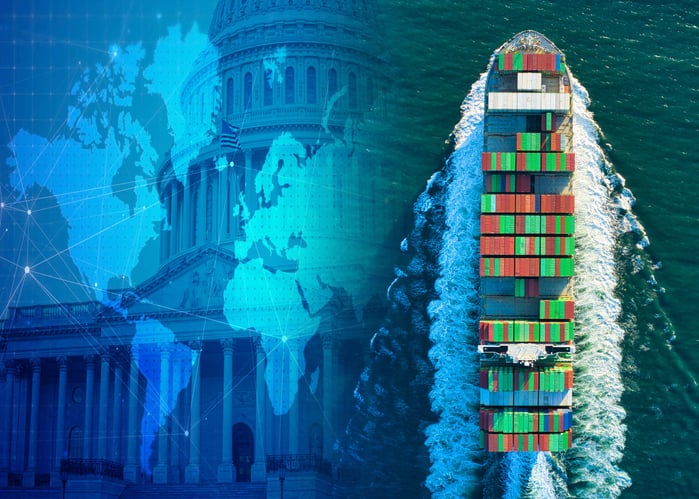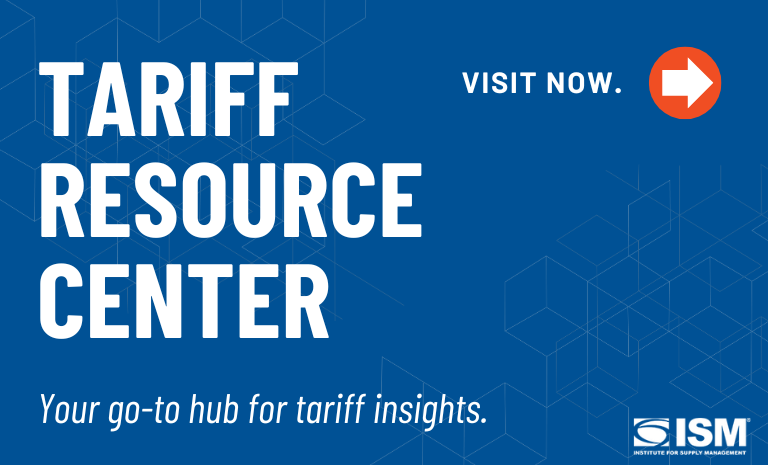Tariffs: Managing Cost and Availability

Tariffs uncertainty and volatility are likely to persist for the foreseeable future, and managing the disruption is no easy feat for manufacturers and retailers.
“It’s a highly dynamic regulatory environment. Some businesses are still trying to ride out 2025 with incremental improvements, while others are planning big shifts for 2026,” says Helaine Rich, vice president of strategic sales and administration at ePost Global, an international parcel and mail shipping solutions company in Boynton Beach, Florida.
The key is staying nimble, she says: “That means understanding your data, modeling different outcomes, and being prepared to act quickly as new trade rules and tariff structures come online.”
Rohit Tripathi, vice president of industry strategy, manufacturing at Relex, a demand forecasting and supply chain solutions provider, says supply chain leaders must realize that availability is the new battleground.
“Consumers don’t care about tariffs — they care if the product is on the shelf. And if it’s not, they’re gone,” says Tripathi, who is based in San Ramon, California. “Every upstream decision we make today has to be evaluated through that lens: Can we get the product where it needs to be, when it needs to be there — no matter what changes overnight?”
“The organizations that survive and thrive,” says Jackson Wood, director of industry strategy, global trade intelligence at Descartes Systems Group in Waterloo, Ontario, “will be the ones that can learn and adapt the fastest.”
Inside Supply Management® asked Wood, Tripathi and Rich to share thoughts on tariff-related questions. This is part 1 of a two-part series featuring their answers. The second article is schedule to appear in the August 19 edition of Inside Supply Management® Weekly.
Question: What impacts are you seeing from the tariffs?
Wood: For global supply chains, the tumultuous U.S. tariff environment has created high levels of uncertainty and volatility for global trade. If we look at U.S. containerized imports in recent months, both May and June showed uneven performance and contracted volumes as (1) the de minimis exemption was ended for China and (2) elevated tariff uncertainty weighed on shipment flows.
July volumes, however, surged to the second highest level on record, clipping 2.6 million 20-foot equivalent units (TEUs). July’s dramatic rebound underscores the impact of U.S. tariff policies, not just seasonal demand cycles, on container volumes.
As U.S. importers evaluate their supply chains in the face of the August 1 implementation of reciprocal duties on over 60 countries, the August 7 start of India-specific tariffs and the universal copper tariff, and the October 15 expiration of the U.S.-China tariff truce, high levels of uncertainty and volatility are expected to persist.
Tripathi: We’re seeing tariffs reinforce and accelerate changes that have been underway since the pandemic — particularly a shift toward more regional and diversified sourcing strategies. Tariffs, especially when layered on top of other systemic pressures like climate disruptions and geopolitical risk, are prompting companies to reassess the long-term viability of extended, globally concentrated supply chains.
For sectors like consumer-packaged goods (CPG) and food, where cost and availability are critical, tariffs are part of a broader recalibration. In parallel, we’re also seeing early investments in domestic production — specifically in sectors like pharma and electronics — though many of these are supported by automation and policy incentives rather than driven by tariffs alone.
What’s common across industries is that this environment is making supply chain decisions more complex — and more consequential. Organizations are looking for resilience, but they’re also balancing that against cost, lead time and customer expectations.
Rich: We’re seeing cost increases across the board due to new and proposed tariffs. Most companies can’t simply absorb those added costs, so they’re passing them through to customers. That’s triggering a broad reassessment across pricing, sourcing and fulfillment strategies. In particular, there’s increased pressure on U.S. merchants to accurately label country of origin. Mislabeling — especially when goods are made abroad but fulfilled domestically — can now result in significant surtaxes. That’s created urgency around data accuracy and compliance.
Q: What strategies are manufacturers, importers and exporters using to shift tariff implications?
Wood: Businesses are evaluating and taking various approaches to reduce the impact of tariffs and, at the same time, optimize global sourcing and maintain compliance with evolving international trade tariffs and regulations:
- Re-engineering products for lower tariffs. Lower import costs by modifying products for favorable classifications.
- Using free-trade agreements (FTAs). Reduce tariffs by sourcing from countries with favorable trade agreements.
- Optimizing duty-drawback programs. Discover refunds of up to 99 percent for tariffs on re-exported goods, saving costs.
- Considering foreign trade zone (FTZs) Defer, reduce or eliminate tariffs, boosting cash flow and savings.
- Researching alternative market sources. Diversify supply chains by sourcing from low-tariff countries to reduce costs.
- Making sure to use the correct Harmonized Tariff Schedule (HTS) codes. Accurate classification prevents tariff overpayments; regular audits ensure compliance.
- Negotiating tariff cost sharing with suppliers: Share tariff costs and offset import expenses.
- Investing in trade compliance software: Trade compliance software can help automate tasks, keep pace with regulatory updates and reduce compliance risks.
Rich: Many companies are still in the exploratory phase. Some are modeling the long-term ROI of establishing European Union (EU)-based distribution hubs to avoid the costs of double-shipping inventory through the U.S. Others are utilizing bonded warehouses or exploring FTZs to delay duty payments and preserve cash flow. There’s also been a shift toward B2B bulk shipping models — warehousing goods closer to the end customer and reducing taxes based on pre-sale value rather than full retail pricing.
Tripathi: We’re seeing companies take a more data-driven, integrated approach to navigate tariff uncertainty — one that blends long-term supply chain strategy with near-term commercial agility. This is driving both supply chain reconfiguration and realignment, bringing in a blend of nearshoring and friendshoring strategies.
Instead of relying solely on structural shifts like reshoring or FTZ utilization, many are investing in flexible planning capabilities that allow them to dynamically adjust sourcing, inventory and pricing based on scenario inputs. That might mean optimizing supplier mix across geographies, running cost simulations tied to tariff thresholds, or adjusting allocation strategies to protect availability in priority markets.
In retail and manufacturing, for example, we see growing interest in aligning supply chain and commercial teams around a shared, data-rich planning environment. When decisions about promotions, pricing or packaging are made in isolation, companies risk passing through unnecessary costs — or missing opportunities to preserve margin. The organizations that are managing tariff risk best are the ones that have visibility across functions and can respond in real time. For groceries and food, we do see the rise of private labels, reflecting the shift in customer preferences for more affordable price points.
There is also an increasing trend of organizations shifting their north America regional warehouses to Canada and Mexico to serve the broader markets outside of U.S. to ensure that the U.S. tariff structures do not impact other markets.
Ultimately, it’s not just about avoiding cost — it’s about protecting availability and customer experience in a volatile environment.

